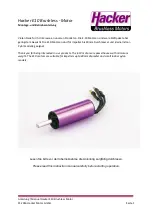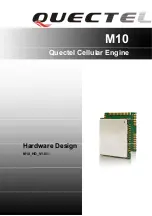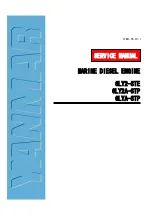
All internal-combustion engines benefit, to some
degree, from extra care when they are run for the first
few times - known as running-in or breaking-in. This is
because the working parts of a new engine take a little
time to settle down after being subjected to high
temperatures and stresses. However, because O.S.
engines are made with the aid of the finest modern
precision machinery and from the best and most suitable
materials, only a very short and simple running-in
procedure is required and can be carried out with the
engine installed in the model.The process is as follows:
1) Start the engine and, with the throttle fully open,
open the needle-valve an extra half turn (180˚)
from the optimum setting. This will produce a rich
mixture that will result in cooler running. Allow the
engine to run out a full tank on the ground. (Avoid
dusty surroundings.)
2) Now fly the model with the needle-valve re-set 20 -
30 degrees open from the optimum setting ( i.e.
40 - 60˚ from the highest rpm setting ).
3) Close the needle-valve very slightly on successive
flights so that the engine is running on its optimum
needle setting at the fifth or sixth flight.
RUNNING-IN ("Breaking-in")
These engines are equipped with a throttle type car-
burettor which provides a wide range of engine speed
control. With the throttle lever linked to a suitable
electric servo in the model, movement of the throttle
control on the transmitter will enable engine rpm to be
varied, proportionally, from idling speed to full power.
The carburettor of your engine has been factory set
for the approximate best results and no adjustment
(except to the needle-valve) should be required
provided that the fuel tank is correctly located, as
previously described. After the engine has been run-
in, check the operation of the throttle according to the
following chart. Re-adjust the controls only when
necessary.
CARBURETTOR
23















































